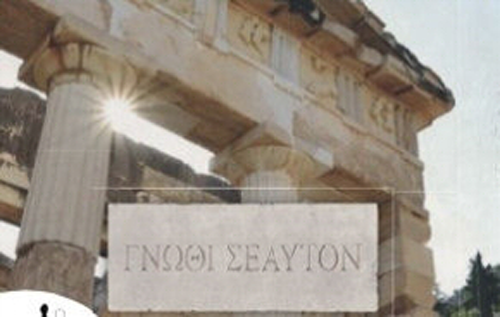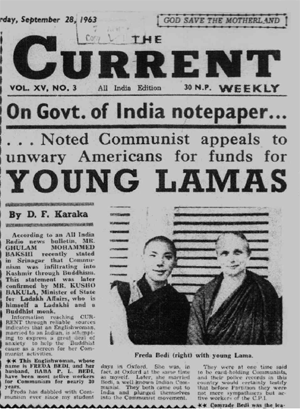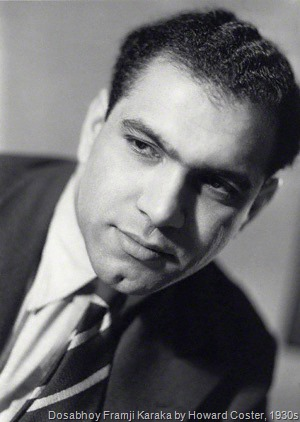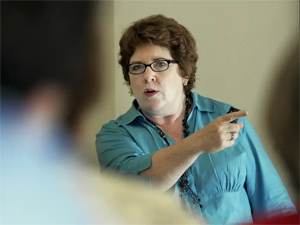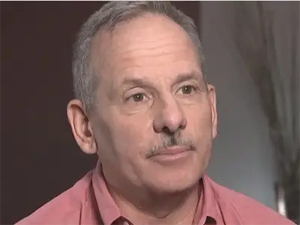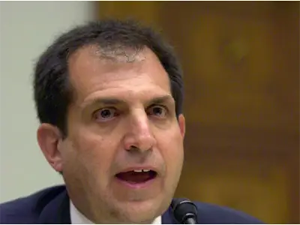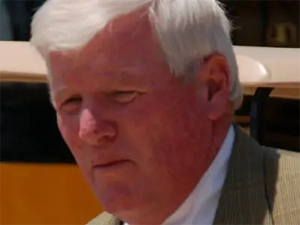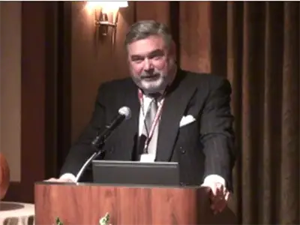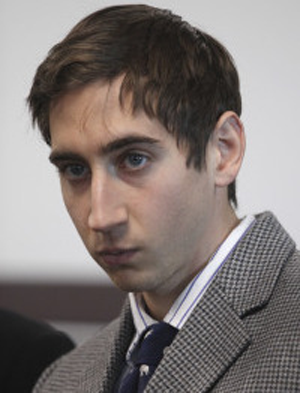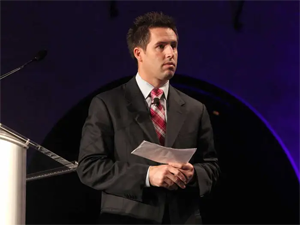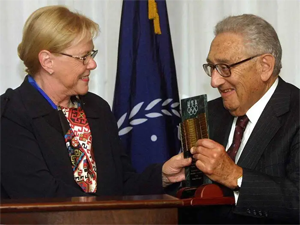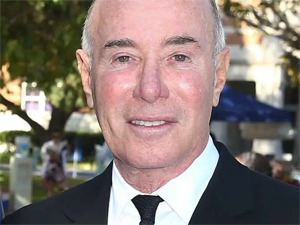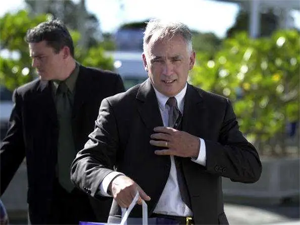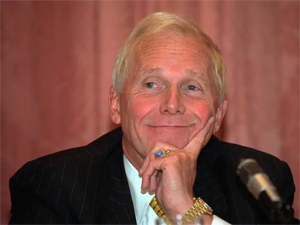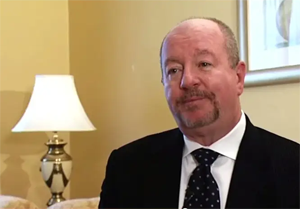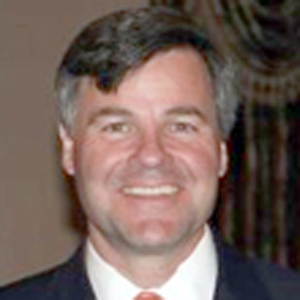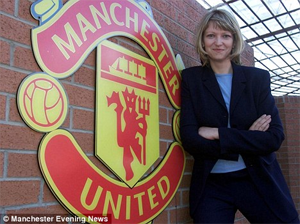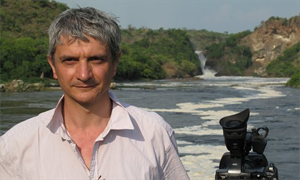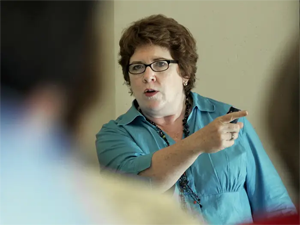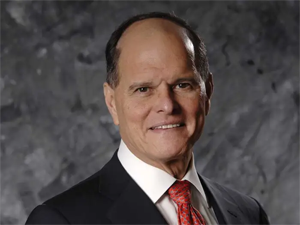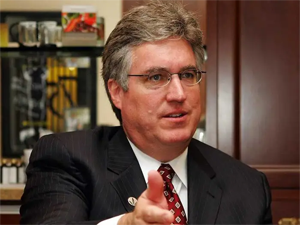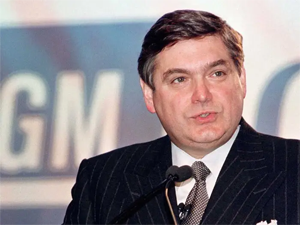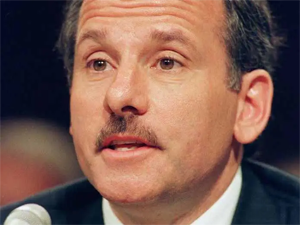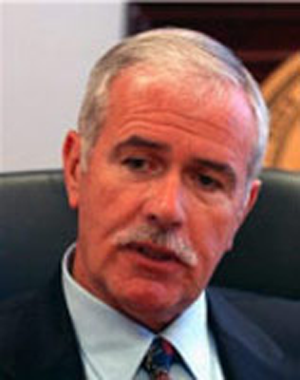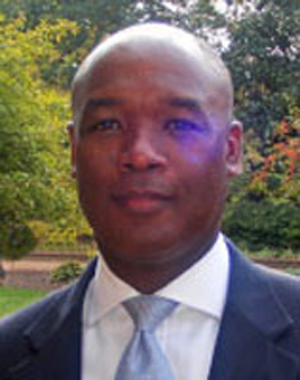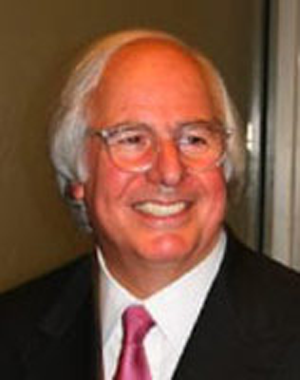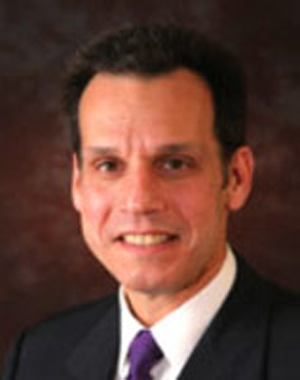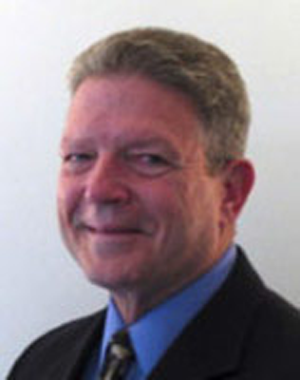by Alleva Franca
francaalleva.it.
[Translated from Italian]
Bedi faced his own moment of revelation which, uncannily, also involved a breakdown and a dramatic change in his life. It was as if husband and wife were mirroring each other at just the moment their marriage was unravelling. He started taking part in seances -- perhaps, Ranga believes, to try to contact his brother who had recently died. He started writing wildly, sometimes apparently in languages of which he had no knowledge. One day, Ranga returned home to find his father motionless and with his eyes closed. He eventually arose, came out on a terrace and held his hands outstretched 'like a Muslim prayer'. Ranga's recollection is that his father remained as if in a trance for days. He was motionless and without speech. A doctor repeatedly administered injections, which failed to have any obvious effect. 'About eleven o'clock on the third day, he came down the stairs, went into the loo, had a bath, put on his kurta and went to sleep. He woke up that evening and ate something. But for two months, he was exactly the same as mother had been -- no recognition, no eye contact. His eyes looked totally stoned, though he never took drugs,' Ranga says. 'It was so similar to mother's breakdown. And he also came out of it.'
As with Freda, Bedi's crisis had a lasting spiritual aspect. He developed a keen interest in the occult, establishing the Occult Circle of India; he became attracted to the mystical Sufi tradition within Islam and -- re-engaging with the religion he was born into -- in Sikh mysticism; he believed he had acquired special powers, and took to hands-on spiritual healing. He dressed in a smock and carried a staff; as his hair became increasingly unkempt, he looked like a latter-day Moses. He chose to be known as Baba, which carried with it an echo of a mystical or spiritual identity. It was a reinvention almost as complete as those that marked out the phases in Freda's life; he had gone from gilded youth, to communist and peasants' rights activist, to political apparatchik, to prophet and visionary. Bedi had largely broken links with the organised left and although he remained active in a Delhi-based Kashmir support group, he moved decisively away from active politics.9 'I had been under an impulsion to take to spiritual life,' he recalled a decade later. 'I resigned at once from all organisations .... It was like a realization that now [the] time had come to quit all this work and take to a new form of life.'10 Bedi insisted, not altogether convincingly, that his embrace of a spiritual purpose did not involve any repudiation of his socialist beliefs. 'The statue of Lenin I loved still lies on my mantelpiece, and not a dent on [my] Marxist convictions exists.'11 But several of his old associates felt uncomfortable with Bedi's new look and message and kept their distance. Ranbir Vohra, who had known the Bedis in Lahore and Srinagar as well as Delhi, recalled that his old friend offered to help him communicate with anyone who had passed on: 'He suggested that I talk to Marx. I declined the generous offer.'12 Among the constants in his life were the heavy smoking and use of paan masala, and a more occasional appetite for alcohol.
The death of Bedi's brother also provoked another far-reaching change for the family. T.D. Bedi had a mistress, Raj Narindra. Before his death, he asked his younger brother to keep an eye out for her. Bedi saw through that obligation -- and helped Raj complete the building of a house in Jangpura in south Delhi. 'At first this posed only a financial problem,' Kabir commented, 'later it became emotional. As Freda moved closer to the spiritual path, through Buddhism and meditation, Baba's relationship with the mistress grew closer. It was a time of testing.'13 Bedi's increasingly intimate relationship with Raj was an open secret. 'It was clear to me, absolutely, that there was more than just friendship,' Guli recalls. 'He would tell me not to tell mother about my visits to Jangpura Extension with him.' And there were other women in his life. Guli describes her father -- in the demotic language of modern-day America -- as a chick magnet. 'My mother never spoke about it, but he did have a wandering eye.... He was very charming and charismatic and women came to him like moths to a flame,' Gull says. 'It wasn't exclusive; my father was a free spirit. It was his Achilles heel. He just enjoyed women. He loved my mother -- but that was his Achilles heel. She must have suffered with that. She was a woman, after all.' Whether Freda's celibacy encouraged her husband to be less circumspect about his extra-marital liaisons, or whether his affairs made it easier for Freda to adopt this form of renunciation, it's difficult to say. Her husband's affairs certainly weren't the impetus behind Freda's turn to Buddhism, but it may have made her pursuit of a religious life easier. Her husband had disavowed his marriage through his infidelity. It perhaps allowed her to forsake sex without feeling she was being selfish.
-- The Lives of Freda: The Political, Spiritual and Personal Journeys of Freda Bedi, by Andrew Whitehead
"As a student, athlete, politician, mystic, and writer, Baba Pyare Lal Bedi, better known as Baba Bedi XVI, considered the sixteenth descendant of Nanak, who was in the past, one of the best known and active Sikh teachers.
Father of the well-known actor, Kabir Bedi, he spread a Sikh spirituality. Its setting is different from that of the Sikh master Yogi Bhajan who founded in Toronto, in 1968, the 3HO organization, also known as Sikh Dharma. Master of the Occult Circle of India, he is the descendant of the sixteenth generation of Sat Guru Baba Nanak, Founding Master of the Sikh faith, in the 15th century. Born in 1909 in Punjab, Northern India, he graduated from universities Punjab and Oxford; he was a researcher at the University of Berlin with a scholarship named after Alexander Von Humboldt, working with Prof. Werner Sombart and with Prof. Rudolf Otto of the University of Marburg.
As an athlete he won the championship in the hammer throw in the Indian Olympic race and at the English inter-university meeting in Oxford. Returning to India in 1934 he began to participate, as a leftist revolutionary, in the liberation battle of India and passed a few years in concentration camps and in English prisons.
He was head of the Indian delegation and spent some years in the concentration camp in English prisons. He also headed the North Indian delegation to 1st Congress of the Communist Party of India and member of the National Executive Union of Farmers of India. When the Chinese invaded India it formed the Front of Resistance of Revolutionary Veterans.
During this period of political activity he founded and directed "Contemporary India" (India Contemporanea), a quarterly socio-political publication and the "Monday Morning" (Monday morning), a left weekly.
After the Independence of India in 1947, for five years, he lent his service to refugees following the partition between India and Pakistan.
In 1953, after 20 years of political activity, he gave up politics and turned to mystical life. In 1961, to dig deeper into the heart of the occult, he founded the "Institute for Inquiry into the Unknown"(Institute of Investigation into the Unknown).
Main Sources Consulted:...
-- Baba [BPL Bedi]: Holy Commandments of The Saint of Oneness, Hazrat Mahboobi-Ilahi Hazoor Khwaja Nizamuddin Aulia, The Beloved of the Almighty, Institute for Inquiry into the Unknown, New Delhi 1967.
-- El capitán Richard F. Burton, y Edward Rice
Syed Muhammad Nizamuddin Auliya (Urdu: محمد نظام الدّین اولیاء; sometimes spelled Awliya; 1238 – 3 April 1325), also known as Hazrat Nizamuddin, and Mahbub-e-Ilahi (Urdu: محبوب ء الاھی lit. "Beloved of God") was a Sunni Muslim scholar, Sufi saint of the Chishti Order, and unarguably one of the most famous Sufis on the Indian Subcontinent. His predecessors were Fariduddin Ganjshakar, Qutbuddin Bakhtiyar Kaki, and Moinuddin Chishti, who were the masters of the Chishti spiritual chain or silsila in the Indian subcontinent.
Nizamuddin Auliya, like his predecessors, stressed love as a means of realising God. For him his love of God implied a love of humanity. His vision of the world was marked by a highly evolved sense of religious pluralism and kindness. It is claimed by the 14th century historiographer Ziauddin Barani that his influence on the Muslims of Delhi was such that a paradigm shift was effected in their outlook towards worldly matters. People began to be inclined towards mysticism and prayers and remaining aloof from the world.
-- Nizamuddin Auliya, by Wikipedia
In 1963 he added a new dimension to his work by starting the Center for Psychic Art (Center for Psychic Art).
From 1972 onwards, he came to Italy where, after numerous conferences in Rome and Turin, he stopped in Milan, where he founded and lead the Aquarian Philosophy Center, from which he dissociated and opened his School of New Philosophical Thought by developing his philosophy for the Aquarian Age, taking courses to learn Vibration Therapy, and helping the development of human personality through the Psychic expression. His teachings are about meditation, awareness of God, psychophysical well-being, and evolution of personality.
In 1981 he chaired the International Congress on Reincarnation, held in Milan, and began the World Movement to "live according to Ethical Consciousness," as a means for achieve social Peace.
In the Italian years, Baba Bedi XVI published 3 reference books of Aquarian philosophy: "Total Man" (1975), "Man in the Age of Aquarius" (1982), and "Consciousness, eye of the Soul "(1991). Furthermore, in 1981, he founded and directed the Aquarian philosophy magazine “La Resonance".
He revealed truly new positive dynamics to humanity, which can be implemented on all levels, and at every level, as long as one desires it first. He never tired of repeating: “You can't bring the horse to the river and force him to drink, even if he is thirsty; no violation is possible to free will."
His works published jointly with his wife Freda M. Houlston Bedi* are:
• *India analyzed, work in 4 volumes, (1933-1934 London, Victor Gollancz);
• *Gandhi: Mahatma Gandhi, Saint and statesman, with a preface by Prof. Rudolf Otto, London 1934);
• Karl Marx - Letters on India, Lahore, Contemporary India Publication (1936);
• Sheikh Abdullah: his life and ideals, (1949);
• Harvest from the Desert, Sir Ganga Ram Trust Society (1940);
• Muslims in USSR, Lahore, Indian Printing Works (1947);
• Mystic India, (3 vol.), for The Unity Book club of India, New Delhi;
• Hands off West Irian: Indonesia's national demand from Dutch colonialists (1962);
• Prophet of the Full Moon: Guru Baba Nanak, founder master of Sikhism, New Delhi, Chaudhari Publishers, (1966);
• The art of the tetress, Bombay, Pearl books, (1968), translated into Italian by La nuova Via ed. 1972;
• The pilgrim's way, with a preface by the Indian President S. Radhakrishanan, India (1969), Patiala, Punjabi University;
• *Dynamics of the New Age, New Delhi 1970’
• Conscience as Dynamics of the Psychic for Human Well-being, New Delhi, Institute for Inquiry Into the Unknown;
• Mystic & Ecstacy Eros, New Delhi, Institute for Inquiry Into the Unknown;
• The dynamics of the occult, New Delhi, Unity Publishers;
• The total man, Age of Uranus ed. 1977;
• Soul Eye Consciousness, ed. Zanfi, 2008, second edition of Cittadella Instit. Aquarian pedagogy.
Biographical note of the first wife FREDA MARIE HOULSTON BEDI
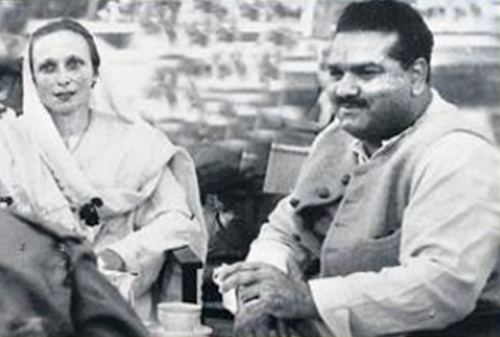
Bedi says : "... in the thirties, when he was in Oxford, my partner of studies Freda Houlston, daughter England, had a such dedication to the cause of Liberty for submissive peoples, whom we fell in love with and we got married.
Back in India, inflamed by needs for Freedom, Freda became one of the chosen followers of Mahatma Gandhi for the non-violent movement of Civil Disobedience. Of course the government she sentenced to prison, entering where she was forced to take off even the ring matrimonial!
The turning point during the events occurred in 1959, with the Chinese attack on Tibet. This led to the mass exodus of the Tibetan people and the great Lamas, led by the Sovereign spiritual and temporal personality of the Dalai Lama himself. At that time Pandit Jawaharlal Nehru, the first to be Prime Minister of India after our Independence, famous for his great heart, he took upon himself the responsibility of providing for thousands of spiritual refugees. To carry out this huge project he called my wife, Freda Bedi, to take in hand the organizational commitment to provide for the needs of the Lamas and of the other refugees.
With its characteristic humanitarian idealism it carried out this commitment to the point that one day, returning from a trip, she arrived accompanied by two young Lamas, adopted as sons. These young Lamas belonged to the singular color category which were Lamas highly evolved in the previous birth and which at the time of death had indicated the time and place of their rebirth.
After being discovered, following the indications, they underwent severe tests and they are known as Tulku and after reaching the maturity of the years they acquired the honor of being called Rimpoche. At this point it may be important to remember that one of them was Trungpa Rinpoche, who went to America and became famous for his teachings and likewise for his wonderful books. The other young Lama adopted son it was Akong Rinpoche, who now founded the largest Buddhist monastery in Scotland.
Fully involved in providing for the well-being of Tibetan refugees and adults Lama, Freda decided to become a Buddhist nun and lived this role with that absorption and dedication of the Soul that was given the sacred title of Gelongma: this is the highest step a nun can reach in the Tibetan Hierarchy. Thus, after centuries of Mahayana Buddhism, she, as a woman, had the right to give Initiation for both men and women who wanted to make Buddhism their own. Arrived to this rank he had around him the halo of serenity and wrapped in it he gave quietly goodbye to the Earth while sitting in his contemplation. It was the year 1976.
Source: Baba Bedi XVI, "Australia". But this also told us during some lessons .
Biographical note of the second wife: Antonia Chiappini
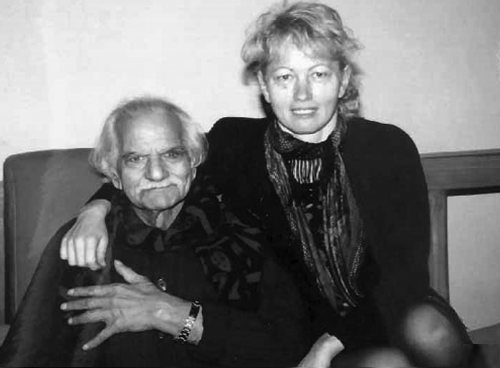
At the time of the meeting with Bedi Antonia he is 25 years old and, from that moment, he dedicates entirely his life, together with him, to creation of a corpus of courses aimed at development of the human personality, of the creativity.
They married in 1977 and in 1979 they founded the New School that Bedi presents like this:
"This New School of Thought Philosophical arose by working hand in hand hand, with my wife Antonia Chiappini Bedi and my gratitude goes to her soul.".
Antonia graduated in psychology, continues the teachings of her husband. integrating them.
Sources: Baba Bedi XVI, "Australia"; Baba Bedi XVI, "The Soul human and the Vibrational Centers for Being and Becoming ". (The human Soul and the Vibrational Centers for Being and Becoming); excerpts from the notebook of Proff. G. Tascini
Pyare Lal Bedi, left the body on the morning of March 31, 1993, in the home of Cristina Aprato in Rivarolo (Turin). He would have turned 84 on April 5. Its sacred ashes are immersed in the river Ganges on January 4, 1998.
INDEX of conferences held by B. Bedi in Italy present in my personal archive
1975
How to avoid negativities
Why the study of reincarnation is important?
Why is 1975 important?
1976
The dynamics of the ego
Food and human system
1978
Essence of Man
How to get to know myself
1979
The character of the new Age: Age Aquarius
1981
The alphabet of vibrational therapy
The Basics of Aquarian Philosophy
1982
The Aquarian concept of Justice
Psychic writing and automatic writing
The study of previous life like therapy and human consciousness
Live according to nature
The specter of identity
New light on the nature of the mind
Pedagogy in the Aquarian Age
The illusion of sociality
Goodbye! supernatural and paranormal
The physiognomy of prejudice
Destiny prophecy and free will
Handicapped sociality and sexuality
The morality of the soul
The dynamics of ethical consciousness
1983
Aquarian Trinity: democratic purpose
The divinity of desire
The roots of holiness
Listening to the inner voice
The invisible source of aspirations
The language of dreams
Human purpose
The alphabet of Being
The dynamics of becoming
1984
The anatomy of frustration
The essence of the doubt
The roots of power
The art of living
Live? Like?
The physiognomy of peace
Peace and human conscience
1985
Nobility of selfishness
Social presumptions
Roots of realization
The illusion of love
The reality of the present
Physiognomy of individuality
Anatomy of Individuality
Purpose of the ideology
1986
The frontiers of ecology
The mirage of sociality
The soul of knowledge
Why?Why?
I do not know
The wisdom of ignorance
Creativity and peace
The real need
To hell with the devil
1987
The spiral of ecstasy
The call of the flame
The identity of the source esoteric
The divinity of the woman
Gorbachev flies to Marx
Purpose of the couple
The purpose of the moth
1988
Spirituality and realpolitik
Linguistic nonsense
Violence yes or no?
1989
Justice in the Aquarian era
I, you, the others
Exist or be?
1990
It was Aquarian and contemporary changes
Cosmos and human consciousness
Mysterious number: 17
The nest of silence: art
1991
Aquarian philosophy
Ethical awareness
Consciousness and holistic feeling
Magic of balance
1992
The birth of the Light
***
I attended Baba Bedi from 1979 to 1992, studying, practicing and developing:
5 basic courses of Vibrational Techniques personality development through the drawing
5 courses of Aquarian Pedagogy
Vibrational anatomy
Distance healing
handicapp
The art of contemplation
The sacred communication technique (mediumship)
The soul of dance, word, music, painting, color
So-called mental illnesses
Esoteric light of sexuality
Birth preparation (my program discussed with him)
Planetary emanations
Precious stones-chakras- the 18 senses
The vibrational network
first in Via Cicco Simonetta in Milan and then in Segrate.
On the technique of personality development through drawing, one of the many elaborated by Bedi that deal with the human living recognizing the roots of psychosomatic and behavioral manifestations, I wrote two texts, one with Cinzia Rffinerngo: The language of Consciousness, ed. Psyche2, Turin 2006 and the other: Breaking chains and StreetLib ebook 2016 but also others handwritten on this technique, before me and you can find them, and browse some pages, in the menu: Publications.



